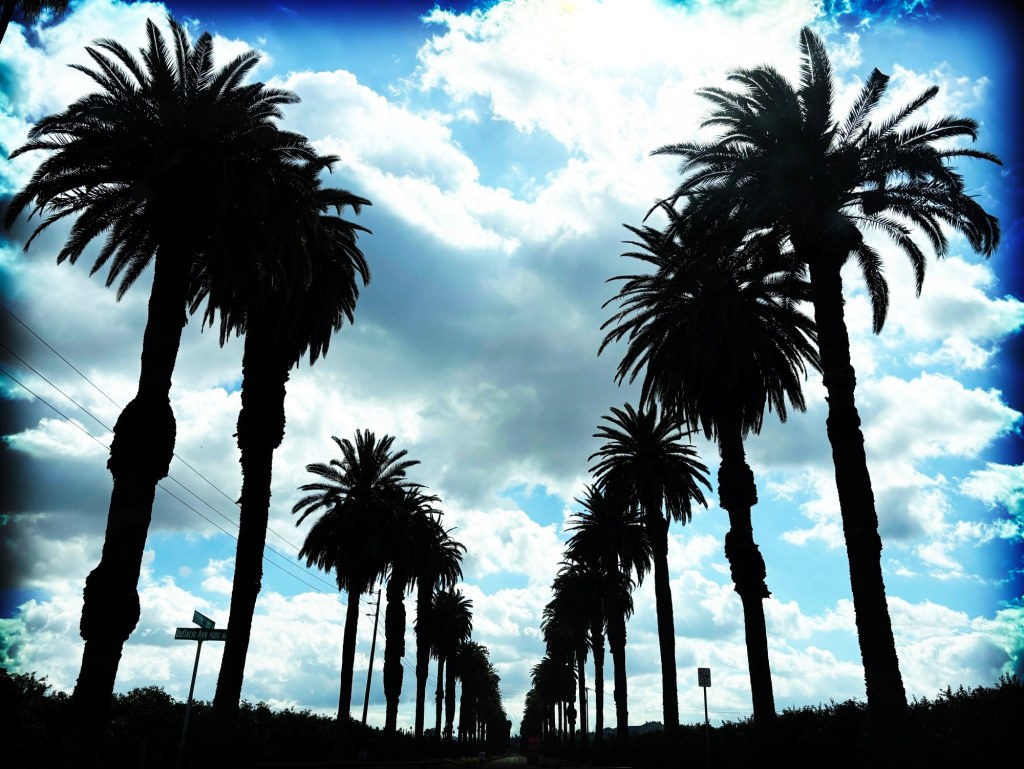Palm Sunday is April 13 and palms have long been a symbol of sunny Southern California. There are many different types of palms around California, but there is only one native to the area.
A tree or not a tree, that is the question
The palm tree isn’t really a tree. They are Arecaceae which is a family of perennial flowering plants in the monocot order Arecales. Their growth form can be climbers, shrubs, tree-like and stemless plants, all commonly known as palms. Those having a tree-like form are called palm trees. Currently, 181 genera with around 2,600 species are known, most of which are restricted to tropical and subtropical climates.
Comparison between palm trees and hardwood trees
Comparison concerns only generalizations.
Palms (monocots)
– long narrow leaf, striate (parallel) leaf venation
– adventitious roots (early development of roots derived from the shoot to compensate the roots’ limited ability to grow sufficiently due to the lack of cambium)
– vascular bundles scattered, lacking a lateral meristem (cambium)
– no secondary growth
Hardwood (Deciduous) trees (dicots)
– broad leaf, pinnate leaf venation
– secondary growth in (and thus highly developed) root system
– vascular bundles in a ring, lateral meristem (cambium)
– secondary growth
California native
Only one species — Washingtonia filifera, the California fan palm is native to California. All of Southern California’s other palm species, that line so many boulevards have been imported.

In all of North America there are just 14 types of palms that are native.
The Franciscan missionaries were the first to plant palms ornamentally, but landscaping in the 1930s was when the real craze for palms came to California. In 1931 the Los Angeles forestry division planted more than 25,000 palm trees around the city. The most common was the Washingtonia robusta, or Mexican fan palm.
Many of the original palms planted in the 1930s are still around. A fan palm can grow to 100 feet and live for hundreds of years.
In many areas of Southern California the non-native palms are considered invasive and are being removed to restore native habitat. Since they require a lot of water many cities are not replacing them when they die.
The red palm weevil is threatening many trees in Southern California. A 2022 report by the BBC claimed just over 50% of all the palms in the world are threatened with extinction.
Totally ‘nuts’
Each year worldwide there are 10 deaths attributable to shark attacks compared with 150 deaths worldwide caused by falling coconuts.
Indonesia is the world’s leading coconut producer in 2023, with about 17.97 million metric tons of coconuts produced. That year, the Philippines were the second largest coconut producer in the world, accounting for around 14.89 million metric tons of global production volume.
A palm isn’t necessarily a tree and a coconut isn’t necessarily a nut. Botanically the fruit is a drupe, not a nut.
Use of palm trees
The palm tree has been cultivated by humans for almost 5,000 years. This began in the Middle East with the Date palm (Phoenix dactylifera) but soon expanded to other regions with other palm species.
For consumption, fruits like the awarra, coconut, moriche, palm peach and salak.
Palm oil is widely used for food preparation, soap and fuel.
Wickerwork is made from rattan of Calamus Rotang.
Coconut mats are made of coconut fibers.
In Hindu culture, strips of palm leaf were used as paper.
X marks the spot
In-N-Out founder Harry Snyder loved the movie “It’s a Mad, Mad, Mad, Mad World” from the early 1960s. The 1963 film concerns a group of motorists on a mad dash to a state park in California, where they believe a secret stash of cash is waiting for them underneath a “big W.” The big W turned out to be shaped by palm trees. Snyder liked the idea so much that he began planting palm trees outside of his restaurants in 1972 — albeit in the shape of an X instead of a W — to mark the spot of his own symbolic “treasure,” according to an official online history of In-N-Out.
State tree? Or state monocot?
Monocots are a type of flowering plant that first evolved about 100 to 120 million years ago. (Sabal palms, in particular, evolved around 85 million years ago, making them one of the oldest palm species in existence.)
Sabal palms and sabal palmettos are widely distributed throughout the states of the Southeast. Sabal palms were chosen as the official state tree by the Florida Legislature in 1953. The sabal palmetto is also the state tree for South Carolina and featured on its flag and seal.

 Sources: PBS, BBC, Nature and Nature and Ecology, In-N-Out, University of Florida, Muttart Conservatory, Florida Department of state
Sources: PBS, BBC, Nature and Nature and Ecology, In-N-Out, University of Florida, Muttart Conservatory, Florida Department of state



